Chelsea September 2021

Chelsea September 2021
Latest Update!We announced in our last update that we are growing plants for 6 show gardens at the new September Chelsea Flower Show. Two of these gardens are brand new and have been designed for the September Show. The remaining four are gardens that were originally destined for the postponed May Show. (Bodmin Jail: 60 degrees East- A Garden Between Continents, Guangzhou China: Guangzhou Garden, Bible Society: The Psalm 23 Garden, Trailfinders’ 50th Anniversary Garden).
With all of these gardens, the original plant list for May has had to be revised, and all of the spring flowering plants replaced by autumn flowering ones, whilst still encapsulating the essence of the original design. This has presented a significant challenge to the designers.
If a design incorporates tall upright, imposing spikey flowers such as foxgloves, lupins, and delphiniums, then what is the autumn flowering equivalent? The answer is that there aren’t any! But Eupatorium, Persciaria, Veronicastrum and Thalictrum can provide alternative imposing structure, even though the flower heads are smaller, or rounded.
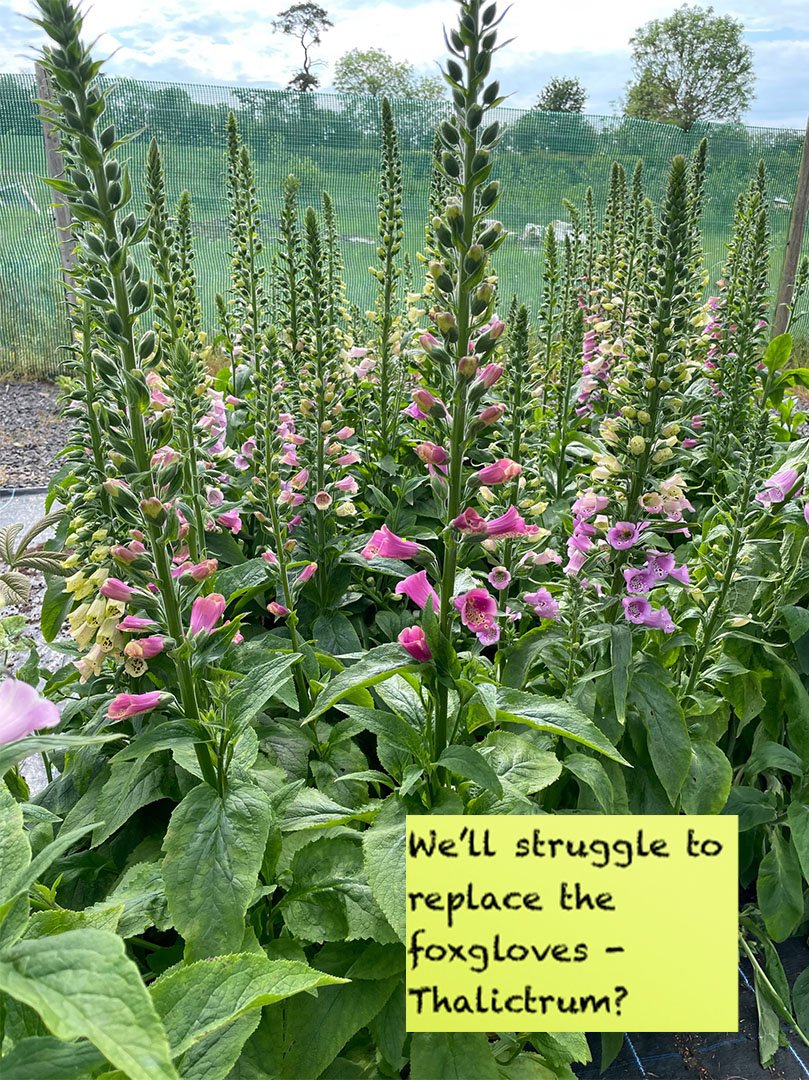
Spring flowering smaller flowers such as trollius, and aquilegia can be replaced with helenium and coreopsis and achillea, but the look is more vivid. Poppies can be swapped for Sanguisorba and Centaurea.
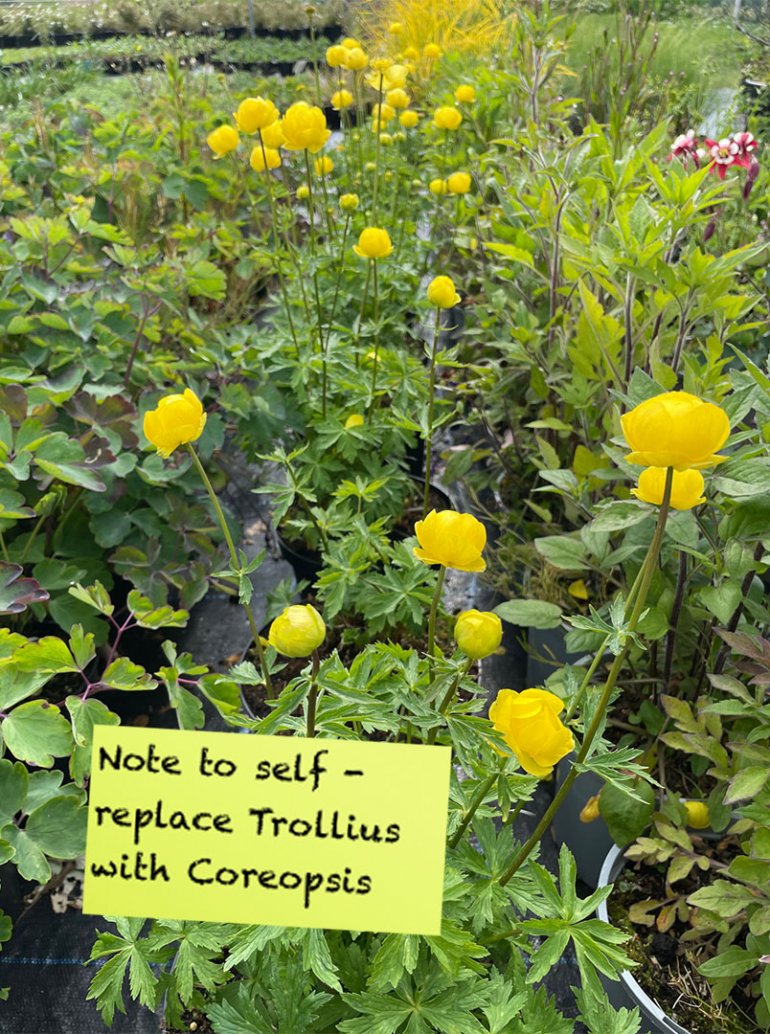
Unfortunately, nobody has bred an autumn flowering peony yet, so how do you replace the majestical effect of peonies with something that flowers in September? This is when the Dahlia family may be invaluable.
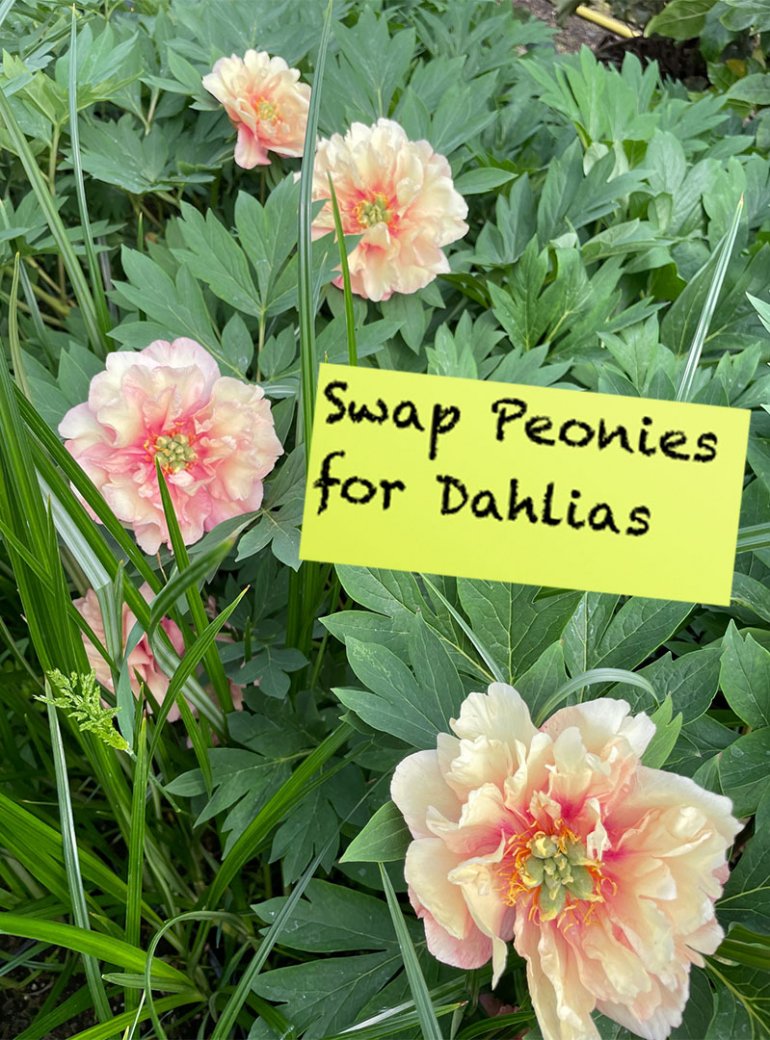
The most difficult type of planting to re-work is a shady woodland. By its very nature, a woodland in spring has a special magic with all the under-storey plants such as foxgloves, bluebells, primulas and wild garlic basking in the higher light that is available until the trees have fully leaved up, and there is a freshness and vitality like no other. By contrast, in the late summer and autumn, the light level in a woodland is at its lowest, and the soil at its driest, and most woodland plants have gone dormant. This is why a garden of this type that was destined for the May Show, is unlikely to attempted for the September Show.
Thankfully there is a decent list of plants that can be flowered for the autumn as well as the spring and so if the design includes geums, Alchemilla, Gallium, and Astrantia then these plants can be still used, albeit with a fresh crop to maintain vigour and freshness.
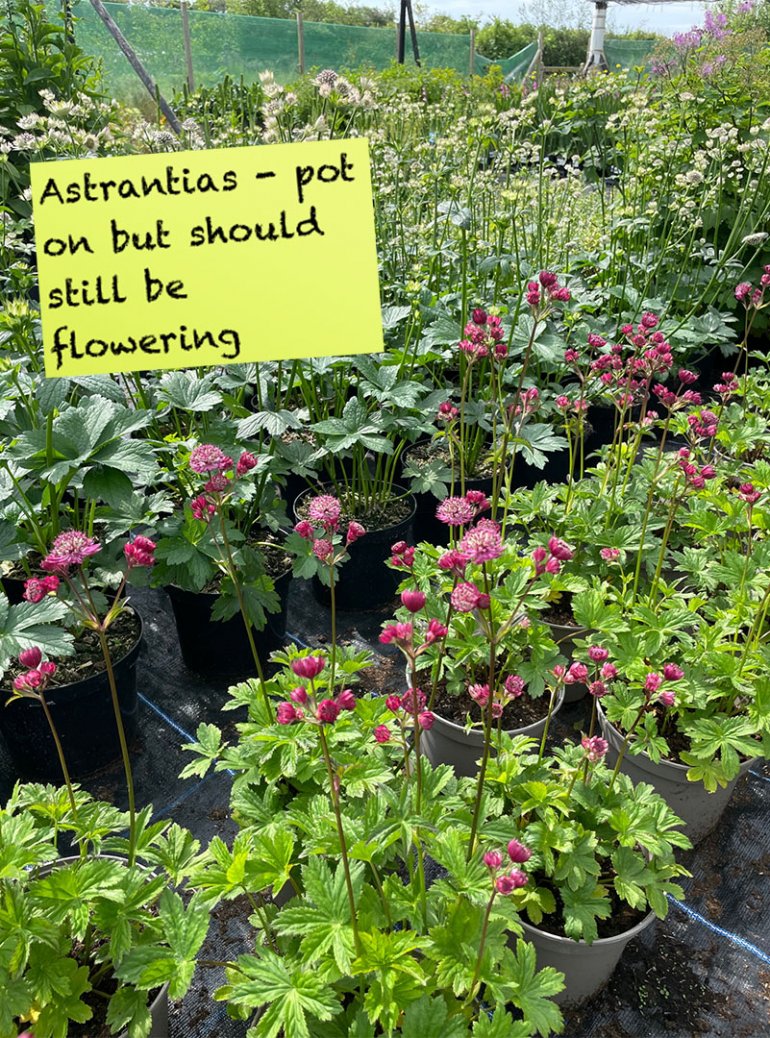
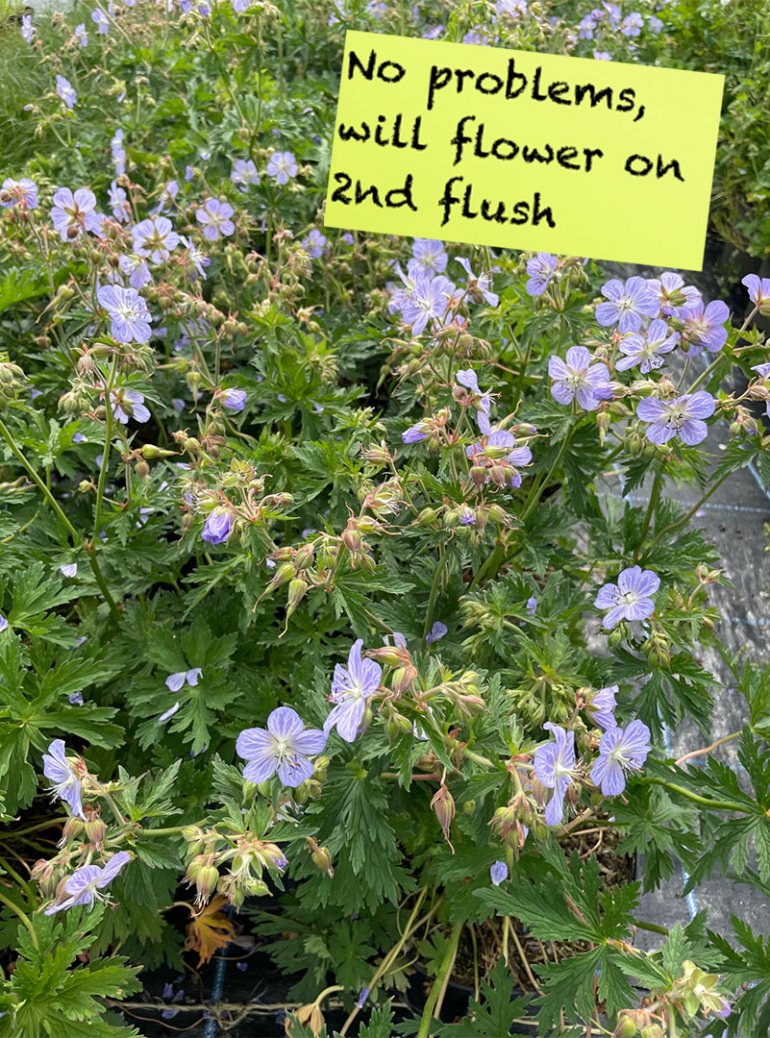
Spring flowering grasses can in most cases be replaced with autumn flowering ones, for example, Molinia and Miscanthus instead of Briza and Luzula. Most ferns are also still looking reasonable in the autumn.
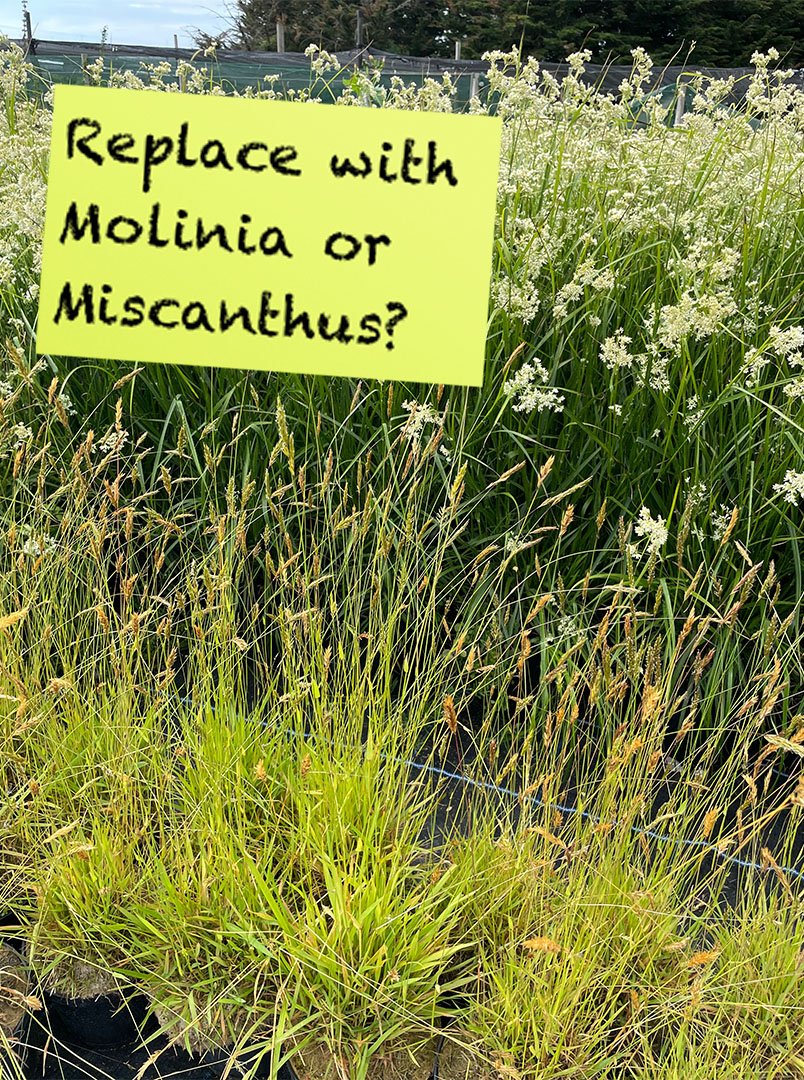
On the shrubby front, there are few autumn flowering shrubs, so in most cases shrubs are being replaced by those which have autumn interest in berries or fruits, or otherwise have been replaced by wholly foliage ones.
Trees are not able to be changed since they were selected months in advance and cannot be replaced. The challenge is to hope that they still retain their leaves after the journey to London for the September Show. We are very glad that we are not holding any Chelsea Trees on our nursery!
We hope that this short piece gives and insight to the design challenges of the plants in a Chelsea Flower Show Garden, deferred 5 months to almost two seasons difference.
In our next update we will talk about the growing techniques that we will be using to produce plants for this exciting new RHS Show.
Keep Checking in!
-
Posted by Liam Murphy
8th June 2021
